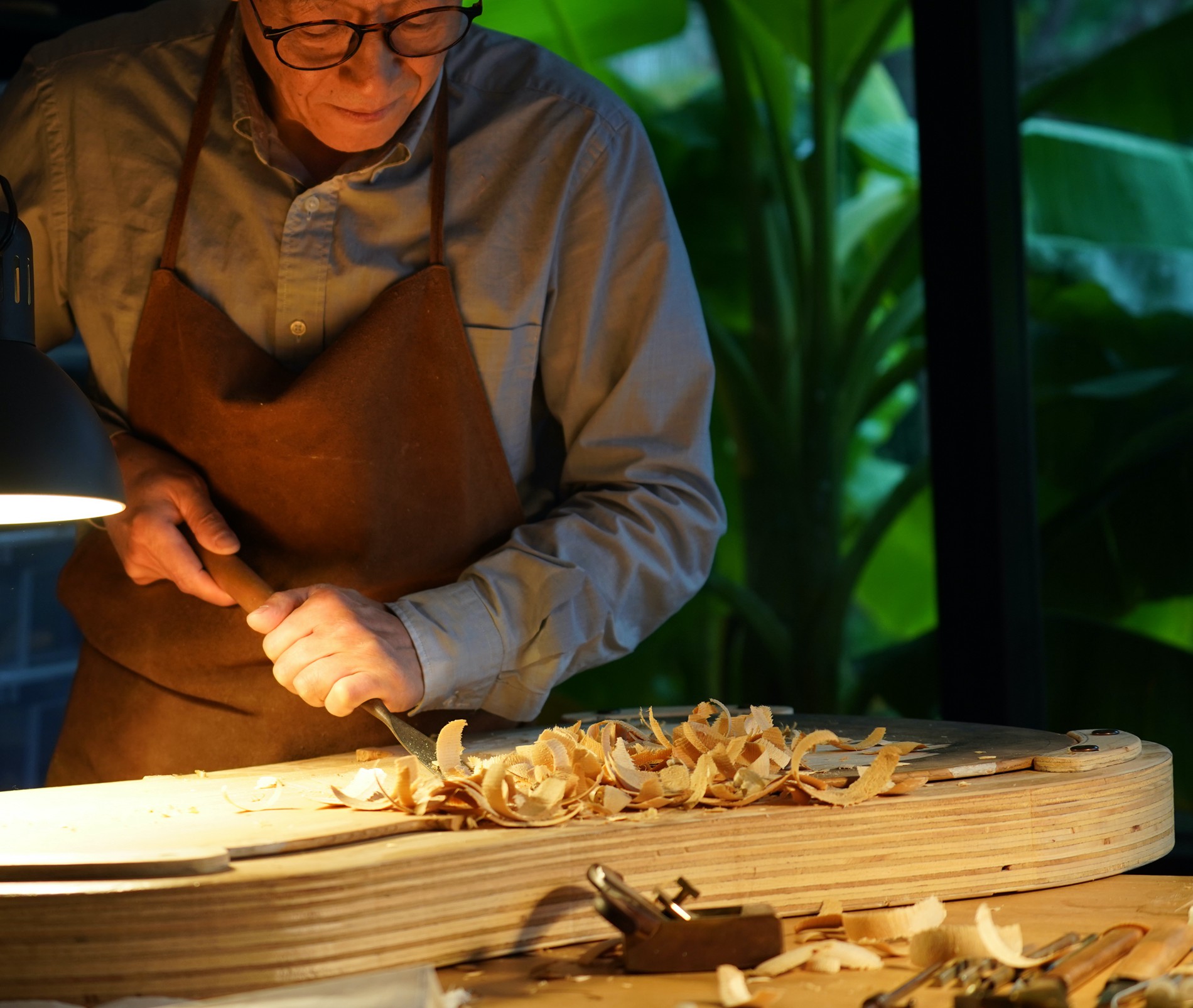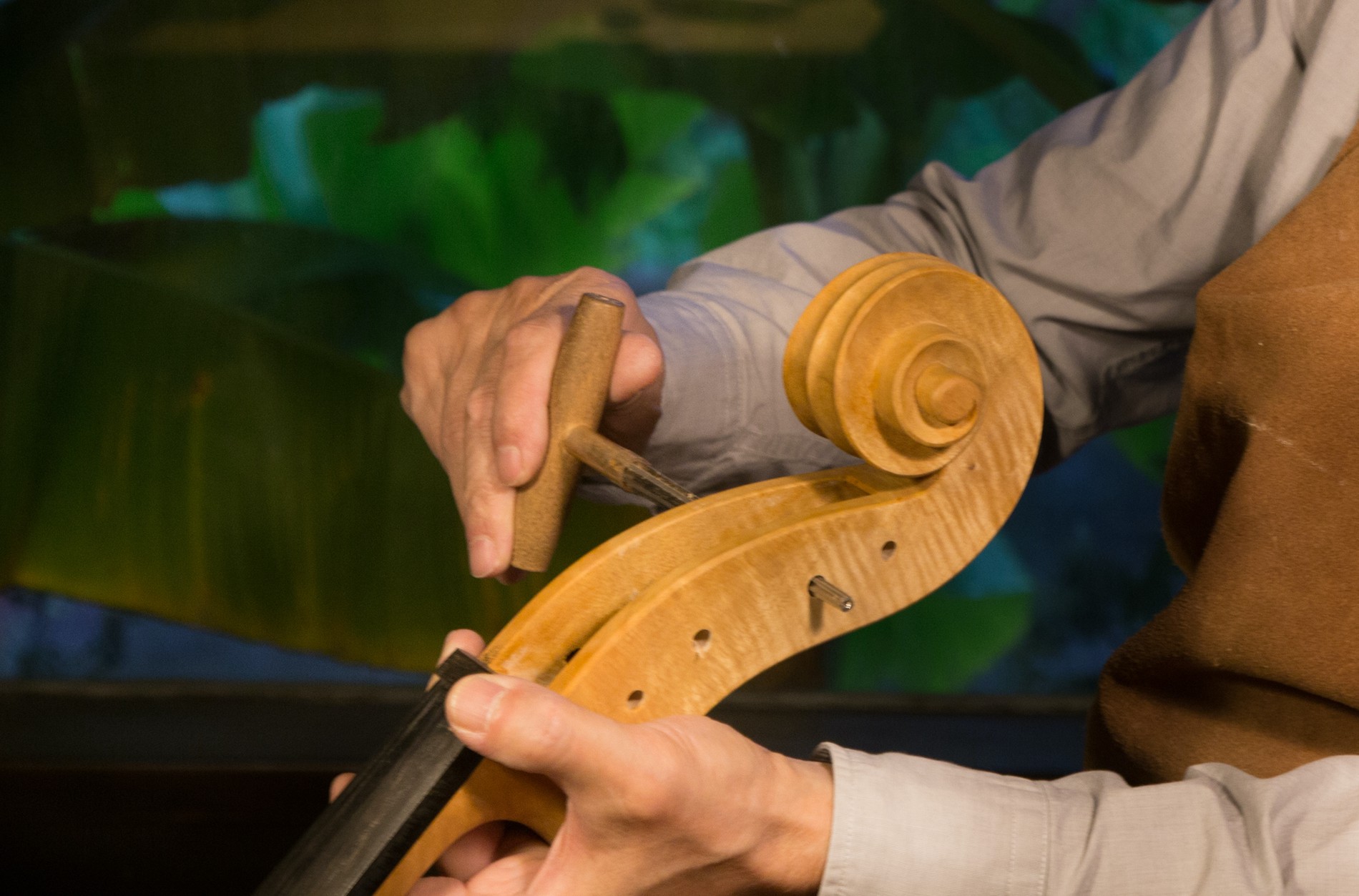
Henry D. Yang
Henry was born into a musical family. With his father, a composer, conductor and cellist, as his first teacher, Henry started playing cello at a very early age. At eleven, he began to learn from Mr. Hu Guo’yao, who was being professor of Central Conservatory of Music and the cello soloist of China National Symphony Orchestra.
Henry became the principal cello at Air Force Symphony Orchestra at the age of fifteen. Shortly after his employment by Beijing Symphony Orchestra in 1983, Henry has been admitted to the School of Music of University of Illinois for his master’s degree with full scholarship. During that time, he decided to study mechanical engineering in Toronto, as he got interested in becoming a luthier.
Henry has been a mechanical and woodworking enthusiast since he was a child. The interest dates back when he was nine during the Cultural Revolution in China. At that time, his father had to work as a composer while making violins to make a living. Henry made violins with his father while learning to play the cello. His first cello was made by his father and himself together.
His violin-making teachers included two luthiers and a restorer of the Central Orchestra, all three of whom were the most authoritative luthiers of their time. At the age of thirteen, Henry worked with his father to make violins that has been used by professional musicians at professional orchestras such as China Central Symphony Orchestra, Symphony Orchestra of China National Opera House, China Broadcasting Symphony Orchestra. The violins made by Henry, with carved heads on the scrolls, soon became the private collections of some musicians.
During his stay in North America, Henry made friends with a group of scientists who loved classical music. In nearly ten years, they often played and enjoyed music together, visited luthier workshops looking for good instruments. Henry and his friends, who are mechanical engineer, aerodynamicist and chemical engineers, have continued to discuss how to improve the acoustics of string instruments and varnish recipes. With those discussions and experiments, Henry explored and improved his philosophy and craftmanship, which gradually evolved into a mature and complete system.
In 1990s, Henry went back to start the business of string instrument with his father, Henry himself serving as the technical director. Before long, Henry set up a workshop specializing in making high-grade professional level cellos. After his father’s death, Henry settled in Vancouver, B.C. and founded the workshop “Parnassus”.
Once an experienced cellist in symphony orchestras, Henry is keen on studying the acoustics, varnish, and playability of instruments. He is particularly concerned with the core techniques such as how to achieve superior timbre and tone, varnishing and assembly.
Henry’s philosophy is based upon classic traditions, while having distinctive personality and style of his own. Henry believes that violin making requires the integration of science, craftsmanship and art. A string instrument is a piece of “functional work of art”. Rather than pursue the “perfect” copy or reproduction of a particular model, he expresses his own unique character on classical models. He holds the belief that “the vitality of an instrument is fully perceivable only when it is producing melodies”. Those ideas permeate every procedure of his violin making.
Henry uses self-developed varnish recipe. Smooth and transparent, the varnish allows the delicate textures of wood to shine through and achieves a fine balance between flexibility and solidity. More importantly, it performs excellently in acoustic optimization, service life extension, resistance to temperature and humidity changes.
Contact: henry.celloclub@gmail.com

